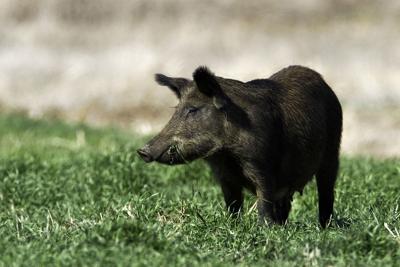Concerns about feral swine and their invasive nature continue to be a hot topic among outdoor recreators across the country, resulting in many Coloradans wondering whether or not their home state will be met with the same challenges in years to come. Considering how damaging and costly the presence of the species can be in an area – with an estimated population of 6 million spread around at least 35 states – it's an important topic to address.
Believe it or not, Colorado has already faced off with this issue in a big way, becoming the first state to fully eradicate invasive feral swine in 2018, the result of a 15-year effort.
Prior to that, wild hogs had been present in Colorado since the 1970s, with issues caused by the feral species becoming prominent in the Centennial State around 2001 with the formation of two large herds. Known for spreading disease and decimating resources needed for the survival of native species, these large herds ultimately prompted wildlife officials to take action.
In 2001, it was estimated that around 250 feral swine lived along Kiowa County's Big Sandy Creek and that another 100 lived along Baca County's Cimarron River – with both counties located along the state's southeastern plains region. Not only were these invasive animals damaging crops and outcompeting native species for resources, they were also blamed for spreading porcine reproductive and respiratory syndrome to around 6,000 domestic pigs at a hog production facility. That instance resulted in all of those domestic pigs being killed.
A task force consisting of federal and state resources, as well as private hunters, was ultimately able to rid the state of feral swine, though it took more than a decade. During this time, hunters had 'open season' on the hogs, able to shoot the animal on sight as officials even resorted to hunting the animal from aircraft. After the issue was first addressed in 2001, the last known feral hog wouldn't be killed until 2018.
Feral swine have been causing problems around the country for decades, said to result in about $1.5 billion in damages each year. While disease and overconsumption are two key concerns, the hogs can also be aggressive toward humans, with dangerous tusks and a powerful bite. Issues related to the hogs are made more serious by how quickly the species is able to reproduce, breeding every six months.
While herds of feral swine are no longer believed to be free-roaming in Colorado, the concern is still there. As recently as January of 2022, someone was caught illegally transporting feral swine into the state. While the motive behind that act wasn't addressed, in some other cases, feral swine have been transported illegally for hunting, as was once reported to be an ongoing issue in Missouri.
The big question remains – will feral hogs ever make their return to Colorado?
The species can obviously cross state lines, making it important for officials to constantly monitor the situation and for the public to report potential sightings to local wildlife managers.
Those unfamiliar with the appearance of feral swine and domestic hogs may have trouble telling them apart, but a few key traits can be noticed.
Feral swine tend to be thinner, with thicker hides and coarse hair. Longer tusks are also common, as is a patterned coat – the result of cross-breeding, often appearing as stripes or spots.
From the looks of it, the United States will likely be dealing with a feral swine problem for a long time. That being said, it looks like Colorado may be in the clear – at least, for now. Granted, as long as Colorado's environment can still support wild hogs – note that feral hogs are able to adapt to thrive in most habitats – it still seems as if there's a looming chance of their return.
STAY INFORMED: Sign-up for the daily OutThere Colorado newsletter here








(1) comment
So here we have an invasive species doing agricultural damage, spreading disease that threatened domestic pigs, and is a danger to humans. Granted, Colorado has them controlled but they multiply like rabbits and are a big threat. Likewise, pythons continue to multiply out of control in the Everglades, killing wildlife and occasional humans. It is such an irony that wolves who keep nature in balance, do not attack or kill humans an they are hated so much that their very existence is threatened by trapping, shooting, killing pups in dens, in many Western states. They are sentient beings and need protection.
Welcome to the discussion.
Log In
Keep it Clean. Please avoid obscene, vulgar, lewd, racist or sexually-oriented language.
PLEASE TURN OFF YOUR CAPS LOCK.
Don't Threaten. Threats of harming another person will not be tolerated.
Be Truthful. Don't knowingly lie about anyone or anything.
Be Nice. No racism, sexism or any sort of -ism that is degrading to another person.
Be Proactive. Use the 'Report' link on each comment to let us know of abusive posts.
Share with Us. We'd love to hear eyewitness accounts, the history behind an article.